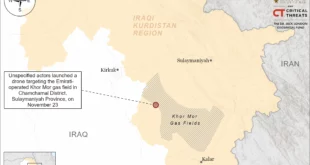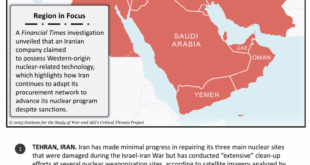China can make friends or break legs. It can’t do both.
In the span of a decade, China has emerged as the developing world’s bank of choice, pouring hundreds of billions of dollars in loans into global infrastructure projects as part of its sprawling Belt and Road Initiative (BRI).
But as its borrowers fail to pay up, China is finding that its newfound authority is coming at a price. Eager to recoup its money, Beijing is transitioning from generous investor to tough enforcer—and jeopardizing the very goodwill that it tried to build with initiatives such as the BRI. China has broken a few bones in Sri Lanka, whose financial turmoil allowed Beijing to seize control of a strategic port, and is hassling Pakistan, Zambia, and Suriname for repayment.
For two decades, countries “were getting to know China as the kind of benevolent financier of big-ticket infrastructure,” said Bradley Parks, the executive director of the AidData research group at William & Mary. Now, he said, “the developing world is getting to know China in a very new role—and that new role is as the world’s largest official debt collector.”
The problem for China is that nobody likes being hounded for money. Chasing down unpaid debts won’t win many friends. It complicates Beijing’s broader aspirations of extending its influence and forging new relationships through economic deals. That tension, experts say, has left Beijing facing an impossible trade-off: Can it collect its money without hurting its image?
“This is a moment where China cannot have its cake and eat it too,” said Zongyuan Zoe Liu, an international political economy expert at the Council on Foreign Relations. “I think China literally has to choose which side it wants to let go. If you want to have your money back, you want to force debt repayment, that basically means you are going to forgo the goodwill.”
Once billed as Chinese President Xi Jinping’s “project of the century,” the BRI was unveiled in 2013 as an ambitious infrastructure development campaign that would crisscross some 140 countries. In practice, the initiative was less streamlined and more opaque. As Chinese lenders scrambled to administer projects under the BRI umbrella, it became a haphazardly executed mishmash of projects with shoddy lending contracts.
BRI was, in large part, a response to China’s own domestic economic challenges, where an excess of domestic production capacity could find no easy outlet, rather than a grand strategy to upend the global order. Following the 2008 financial crisis, Beijing “freaked out” and funneled vast sums of money into infrastructure development as a domestic stimulus package, said Yun Sun, the director of the China program at the Stimson Center.
“The goal was to keep the economy going and keep the economy growing,” she said. “The unintended consequence was that it put China’s domestic industries on steroids.”
Overpumped, the Chinese market became saturated with steel, cement, glass, and aluminum, prompting Beijing to look abroad for answers. Given the size of the overseas market for infrastructure, the logic went, the BRI would allow China to export this industrial overcapacity while also harnessing its foreign reserves and surplus dollars.
“This was about economics,” Parks said. “Now if you fast-forward to today, if the whole purpose of this program is to make money and now you have a lot of deadbeats that are not repaying their dollar-denominated loans, then it probably feels like your strategy is backfiring.”
In 2017, China overtook the World Bank and the International Monetary Fund (IMF) to cement its position as the world’s biggest creditor, although Beijing has since scaled back its lending. But many of its borrowers—still reeling from the COVID-19 pandemic and Russia’s war in Ukraine, alongside Beijing’s lending practices—are now battling to pull their economies back from the brink. Around 60 percent of China’s overseas loans went to financially distressed countries in 2022, compared with just 5 percent in 2010, according to Parks. Unable to pay China back, some cash-strapped governments are pushing for debt relief, forgiveness, or restructuring.
That has put Beijing in a bind. “You make friends when you provide loans. You don’t make friends when you insist on full payment, when conditions have changed and full payment is nearly impossible,” said Brad Setser, a former senior advisor to the U.S. trade representative during the Biden administration, now at the Council on Foreign Relations. “China has put itself in a difficult position because the financial interests of its key policy banks really do now trade off against its diplomatic interests.”
Take Zambia, which defaulted on some $17 billion of debt in 2020 and counts China as its largest bilateral creditor. Over the years, once rosy relations between the two countries have soured as Beijing and Lusaka struggled to hammer out a debt relief deal as part of the G-20 Common Framework. Roadblocks have emerged in the process: U.S. Treasury Secretary Janet Yellen, who has urged China to forgive Zambia’s debt, recently accused Beijing of being a “barrier” to progress. Beijing, in turn, has blamed Washington for “sabotaging other sovereign countries’ active efforts to solve their debt issues.”
“There seems to be a complete impasse between Zambia and China right now,” Setser said. “Any realistic solution to Zambia’s debt problems requires China’s participation. There’s no possibility of going around China.”
With Sri Lanka, another borrower that has been buckling under the weight of its ballooning debt, Beijing has granted Colombo a two-year debt moratorium. But it has not provided the required financing assurances for the IMF to step in, effectively blocking the institution from offering rescue loans to the country.
Part of the trouble, Parks said, is that Beijing does not have a playbook for navigating debt crises and sovereign debt restructuring. “China has never gone through this before,” he said. “They’re kind of extemporaneously trying to make things up as they go along and try to adapt and iterate on the fly.”
In an attempt to come to grips with distressed economies’ debt restructuring challenges, representatives from the IMF, the World Bank, India, China, the Paris Club, and other lenders and borrowers met last Friday. This week, leaders are again convening for a series of G-20 finance meetings in India, and New Delhi is reportedly preparing a proposal that would pressure major creditors including China to accept a haircut on their loans, Reuters first reported.
“China was hoping to get its money back, plus a nice coupon, a little bit of interest,” Setser said. But it “has discovered, in a significant set of cases, that it’s going to be very difficult to get its money back—and the countries want a break.”
 Eurasia Press & News
Eurasia Press & News



